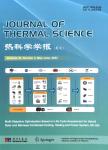Experimental Characterization of the Supersonic Transitional Wake Downstream of a Single Roughness Element
Experimental Characterization of the Supersonic Transitional Wake Downstream of a Single Roughness Element作者机构:Department of Aerospace EngineeringNagoya UniversityNagoya 464-8603Japan Aeronautics and Aerospace Departmentvon Karman Institute for Fluid DynamicsRhode-Saint-Genese B-1640Belgium Zucrow LaboratoriesPurdue University500 Allison RoadWest Lafayette 47907INUSA
出 版 物:《Journal of Thermal Science》 (热科学学报(英文版))
年 卷 期:2020年第29卷第4期
页 面:1085-1093页
核心收录:
学科分类:08[工学] 080103[工学-流体力学] 0805[工学-材料科学与工程(可授工学、理学学位)] 0801[工学-力学(可授工学、理学学位)] 0702[理学-物理学]
基 金:7th Framework Program ESA-ESTEC Karman Institute for Fluid Dynamics European Commission, EC, (ACP7-GA-2008-211485, FEDS2014-21673)
主 题:supersonic boundary layer roughness wake steady measurements unsteady measurements heat transfer
摘 要:An experimental campaign was carried out to investigate the characteristics of the transitional supersonic wake downstream of a single roughness element. Two Mach numbers were tested, 1.6 and 2.3, and two roughness heights, 0.1 mm and 1 mm. Unsteady and steady wall temperature measurements were taken along and across the roughness wake. The spatial trends of adiabatic wall temperature and heat flux, and the spectral time evolution of temperature were documented in this paper. The initial wall temperature was varied during the temperature measurements, and the resulting steady and unsteady effects on the roughness wake were investigated. The streamwise trends of heat-flux and adiabatic-wall temperature confirmed the transitional nature of the roughness wake. Spectral analysis showed that roughness height and initial wall temperature had the same type of effect on the wake wall-temperature fluctuations. The effect of roughness height was more sensible at Mach 2.3, and that of the initial wall temperature was more evident with the smallest roughness also tested at Mach 2.3.



